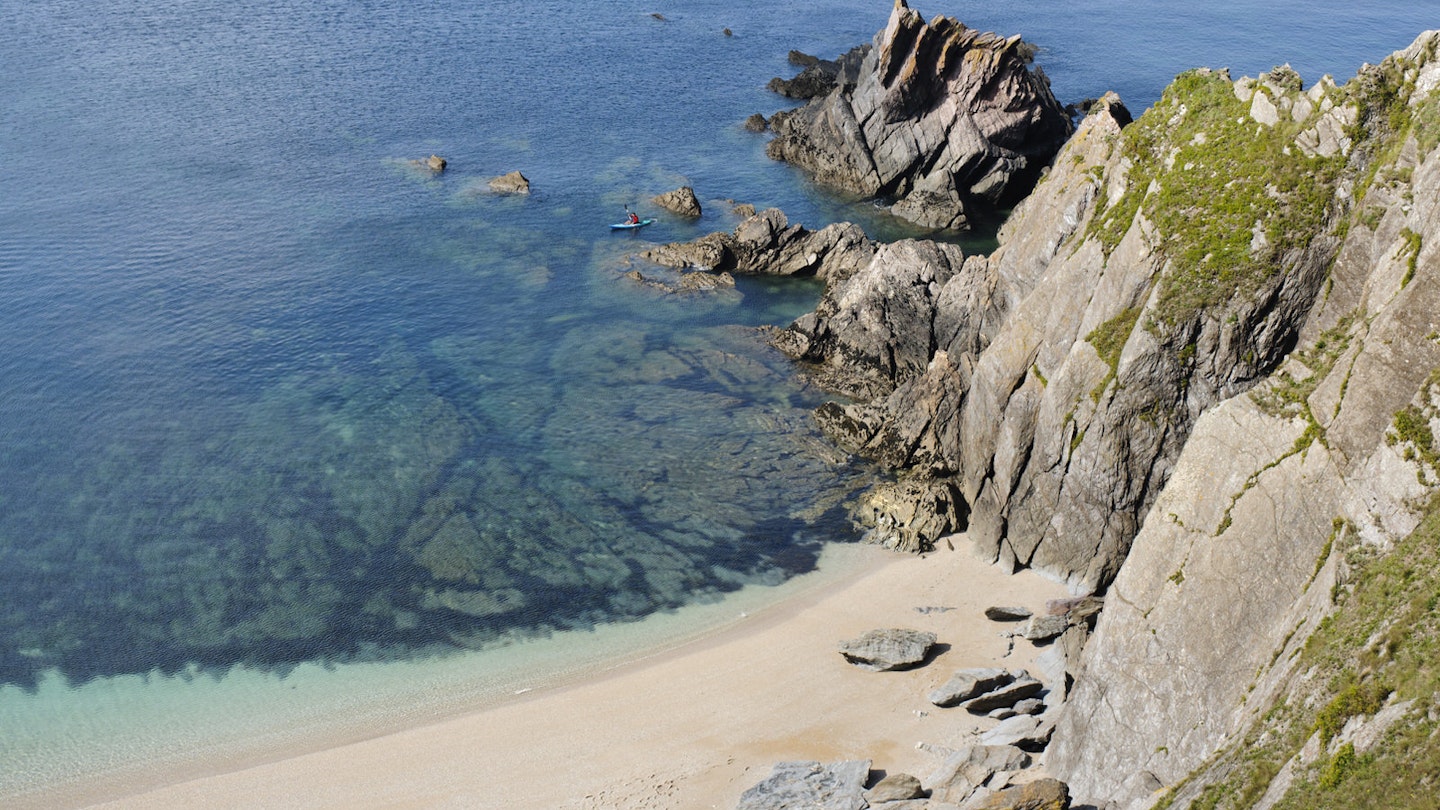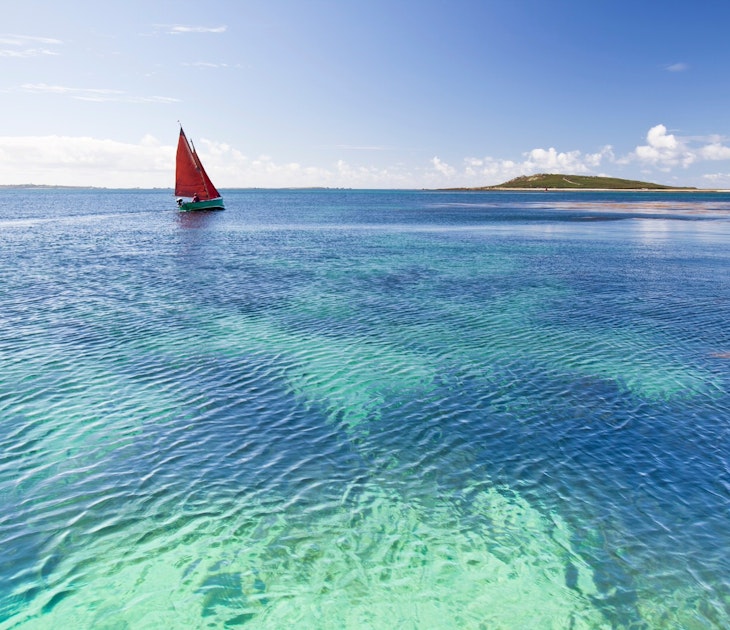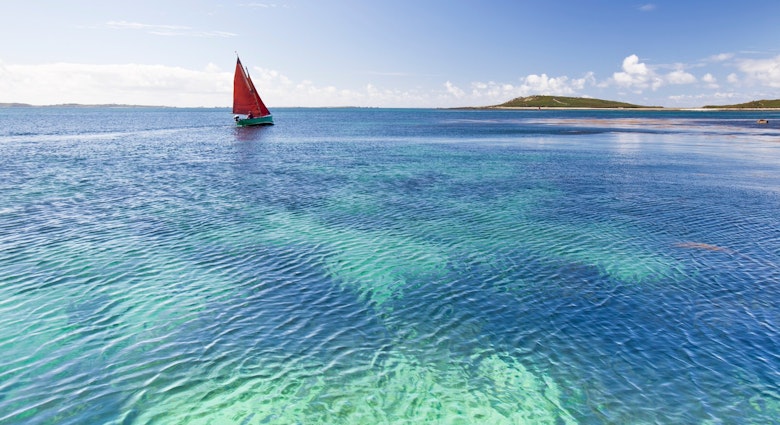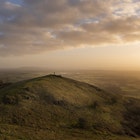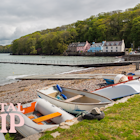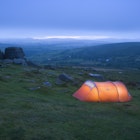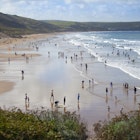The water surges around your kayak…the swell lifts you, drops you onto a rock then suddenly retreats. You’re scarily unbalanced and more water is rolling in. ‘Paddle!’ shouts the instructor. ‘Which way?!’ you call. ‘Doesn’t matter – just move!’
You lean forward, dig the paddle into the water, the blade glancing off rock, repeat on the other side and you’re floating clear. Heart thudding, grinning, eyes wide. Not bad for 11:45am on a Thursday off the south Devon coast.

It may only be 2600 sq miles, but the English county of Devon serves up some seriously big adventures. Sea kayaking expeditions, surfing prime breaks, precipitous cliff hikes, dark sky gazing and wilderness camping – you can do it all here, within a few hours’ drive of London.
Sea kayaking
At Sea Kayak Salcombe (southsandssailing.co.uk) you’ll meet in a beach cafe with an espresso machine burbling on the counter and sand on the floor. Weather, tide and safety briefing done, it’s into the boats and onto the water for guidance on strokes. Then you’re off – the brightly coloured kayaks tiny against soaring cliffs and vivid against the blue sea, slate-grey rocks and yellow gorse. After wave-riding and gully-chasing comes hot chocolate and brownies beside a fire on the sands of a hidden cove.
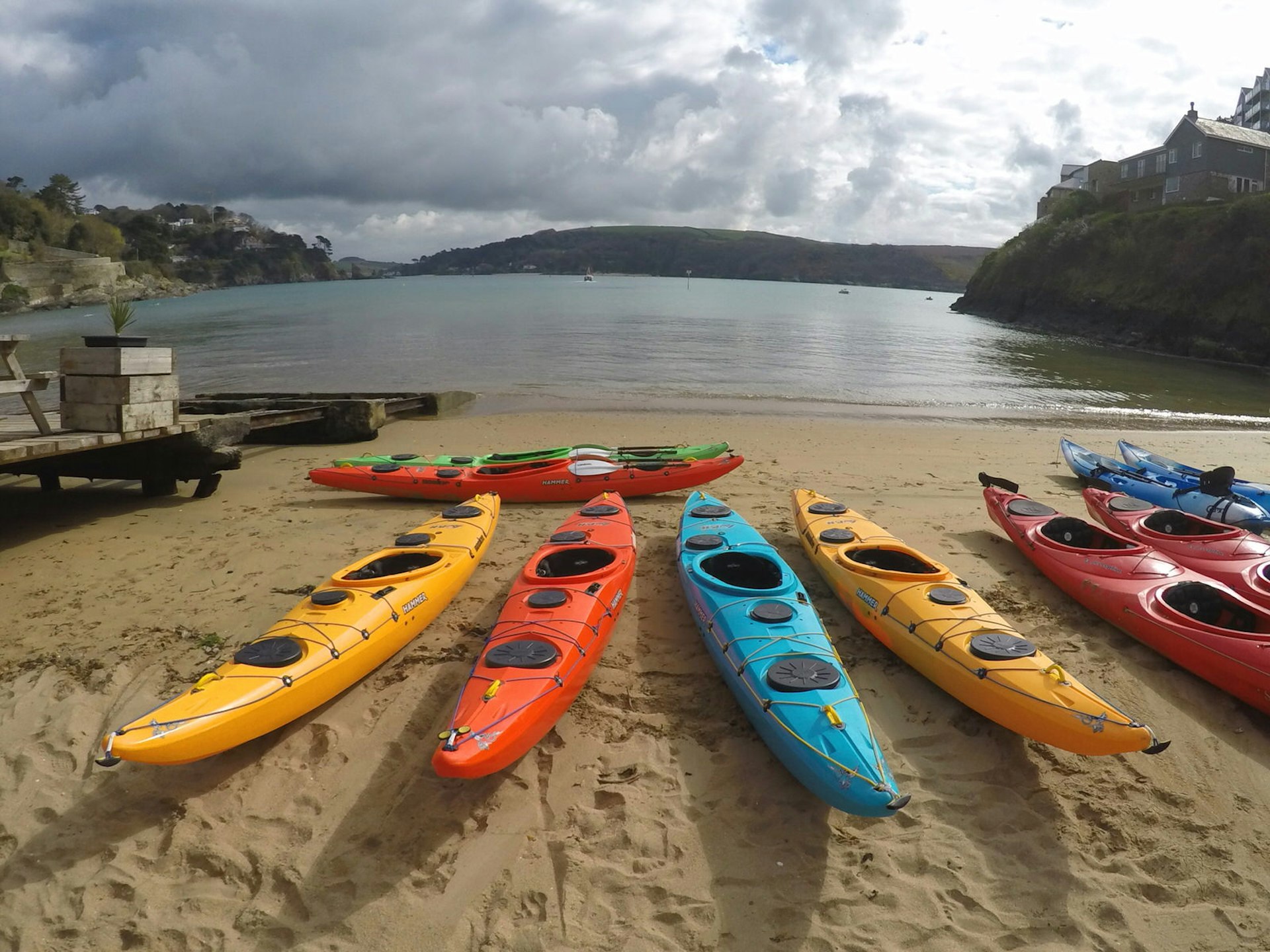
Sea Kayak Salcombe’s trips include the 2 mile Gara Rock Classic paddle; the Rock Hopper (powering into gullies and surf); and a two-day Discover Devon expedition. On this you paddle around 15 miles a day and wild camp; some kayaking experience is preferable. Salcombe itself is a chic sailing port, framed by sandy bays and packed with places to eat and stay.
On the north coast, Exmoor Adventures offers sea kayaking trips along a shoreline of dramatic cliffs.
Surfing and bodyboarding
Croyde is Devon’s mini Maui – a cheerful, chilled village on the north coast where thatched roofs peep out over ranks of wetsuits and surf boards. Here a dune-backed stretch of sand faces a powerful Atlantic swell. Add ancient inns, cool surfer hangouts and green-field campsites and you have a magnet for wave riders. When conditions are right, the surf at Croyde is superb – it’s Devon’s most powerful, consistent beach break, offering peaks, walls and barrels. Learning here will see you paddling out to the line up, catching waves and experiencing the addictive exhilaration (eventually, however fleetingly) of standing up to ride one in.

Surfing Croyde Bay and Nick Thorn Surf School provide lessons in the area.
If surfing proves tricky to master, bodyboarding (lying down), is another way to ride the waves. Hip local surf lodge Baggy offers deluxe dorms, doubles and a café; here surfboard racks line the yard while the deck has views of the sea. Ralph’s (facebook.com/ralphssurfshop) hires out wetsuits and boards.
The pick of the south Devon breaks is at Bantham, a charismatic hamlet set beside a sweeping sandy beach. Here the Bantham Surfing Academy provides surf lessons and hires out kit, the Gastrobus dishes up gourmet beach food and the Sloop Inn (thesloop.co.uk) offers somewhere to stay.
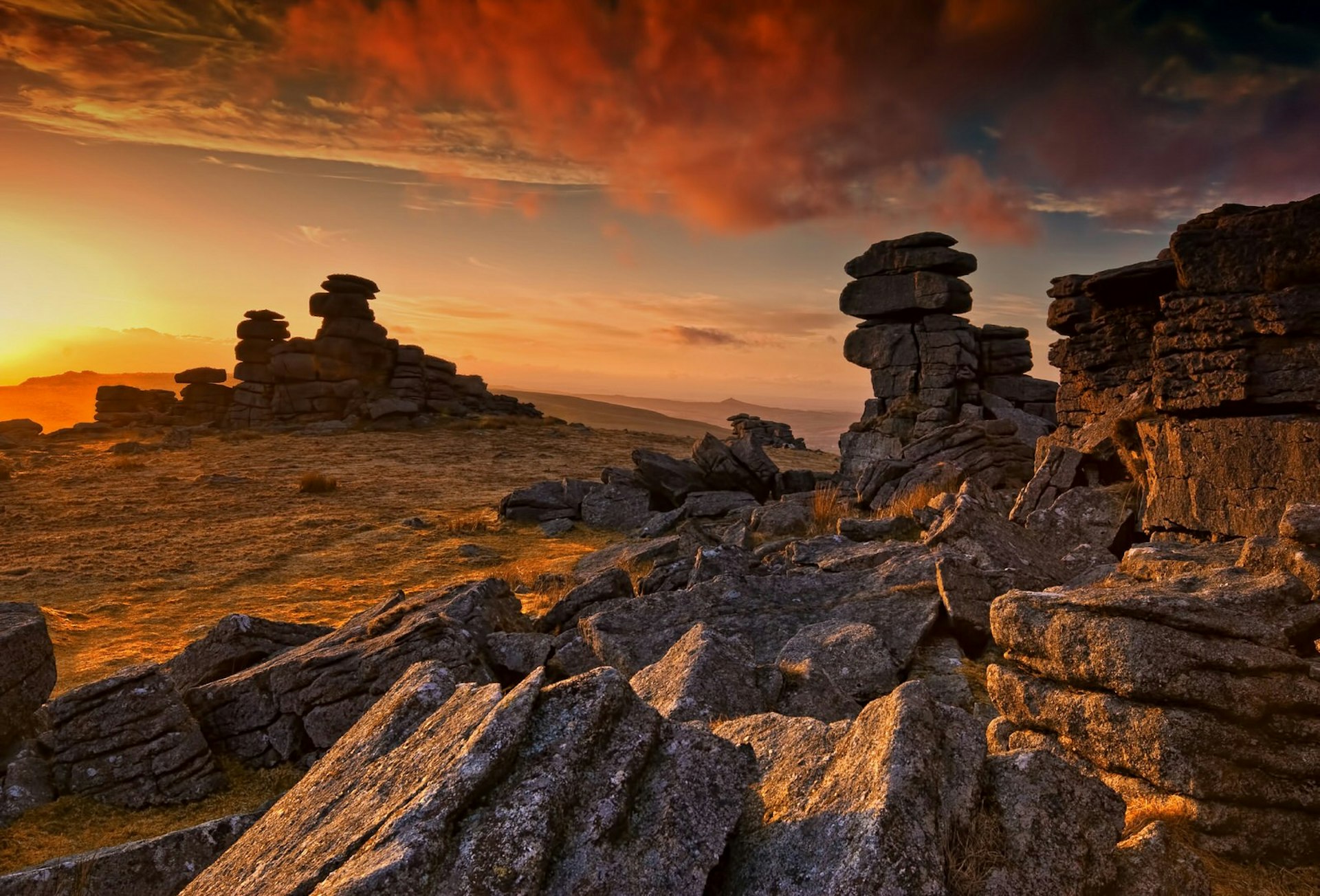
Wild camping
Sitting plum in the middle of Devon, Dartmoor National Park is a 368 sq mile wilderness where honey-coloured tors (rocky hills) snag at the sky, twisted trees cluster in oak woods and moss-smothered boulders line clear streams. The park is one of the few areas of Britain where you’re allowed to pitch a tent without asking the landowner’s permission first. It’s dubbed ‘wild camping’ to distinguish it from ‘mild camping’ – bedding down in recognized camp sites.

With the freedom of wild camping come responsibilities. The areas you can pitch up in and the regulations are listed online (dartmoor.gov.uk): you can’t leave any waste behind, light fires or pollute watercourses, and if you’re not happy without a toilet this isn’t for you.
But if you like your sleep spots on the gnarly side, then pitching a tent or bivvying in this wilderness is thrilling and waking up in a wild, deserted expanse is truly memorable. Camping will never be quite the same again.
Dark Sky gazing
Exmoor, which straddles the border between Devon and Somerset, was the first place in Europe to be named an International Dark Sky Reserve. The accolade recognized the 270 sq mile national park’s exceptionally starry skies, and the efforts being made to preserve them.
Here you get to marvel at extraordinary celestial displays – in city centres around 200 stars tend to be visible to the naked eye, while on Exmoor that rises to 3000. For optimum star-gazing, chose a moon-free night and head to central, higher Exmoor – perhaps Brendon Two Gates (on the B3223), or Webber’s Post (just north of Dunkery Beacon). Then settle down to watch the sunset, the skies darken and a mesmerizing array of glittering stars emerge.

The Exmoor National Park Authority runs occasional night time strolls and is planning a 10-day Dark Sky Festival in October 2017. Its Dark Skies Guide (exmoor-nationalpark.gov.uk) comes complete with star charts and maps pinpointing the best light-free spots. The park’s visitor centres also have copies, and can rent out telescopes (£25 per night).

Hikes and pubs
Devon sits partway around the mighty South West Coast Path. At 630 miles, this is the UK’s longest National Trail, stretching from Minehead in Somerset around the tip of Cornwall and onto Poole Harbour in Dorset.
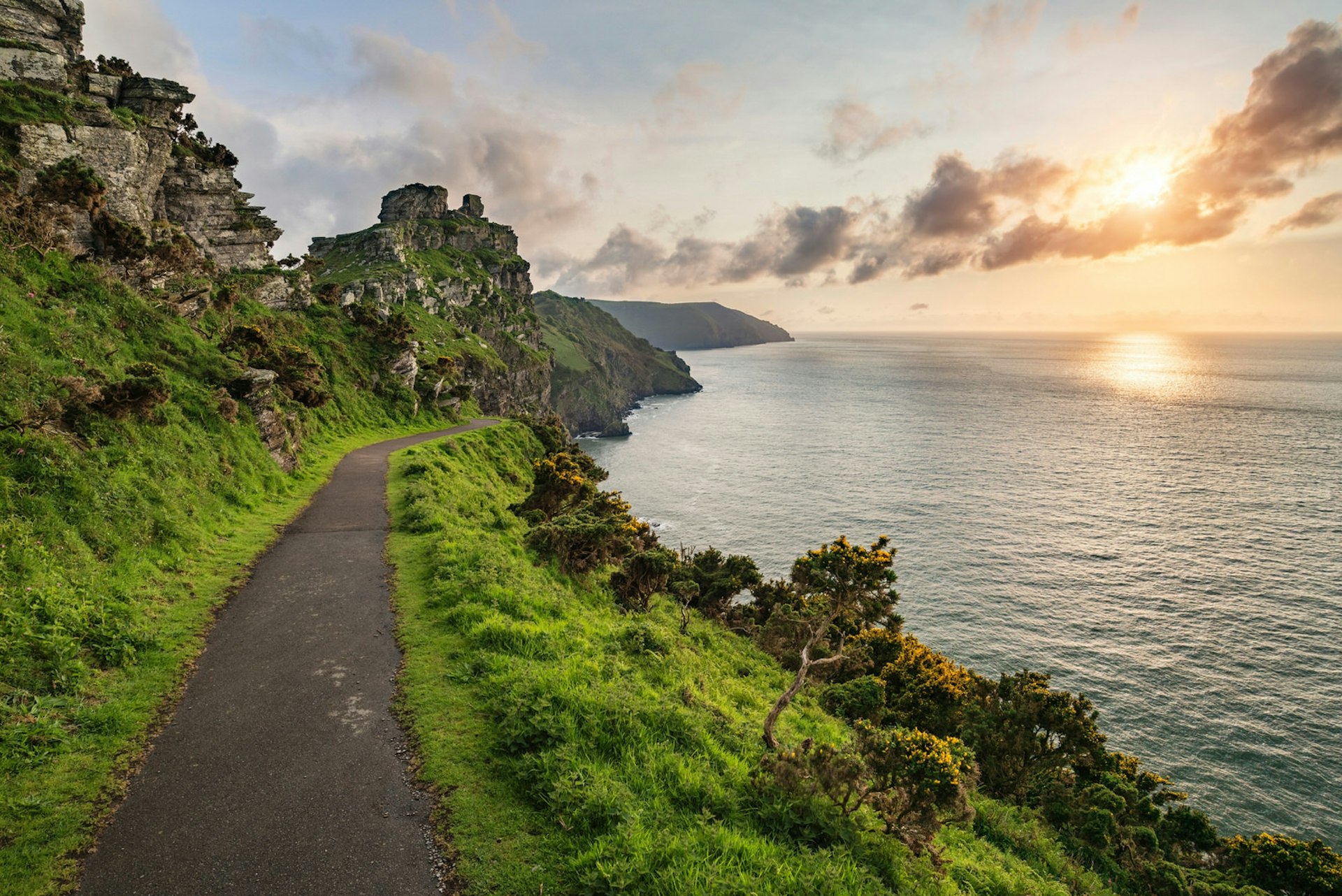
In between, the Devon stretches take in cities, resorts, surf beaches, fishing ports and breathtaking natural environments: plunging Exmoor cliffs around Lynton and Lynmouth, Britain’s largest network of sand dunes at Braunton Burrows and South Devon’s cliffs, harbours and bewitching coves. East Devon boasts a 250 million year-old segment of the Jurassic Coast, where photogenic rock formations have been sculpted out of russet-red sandstone by wind and waves. Walking the entire path will take around 56 days, but it’s easy to dip in and hike shorter stretches.
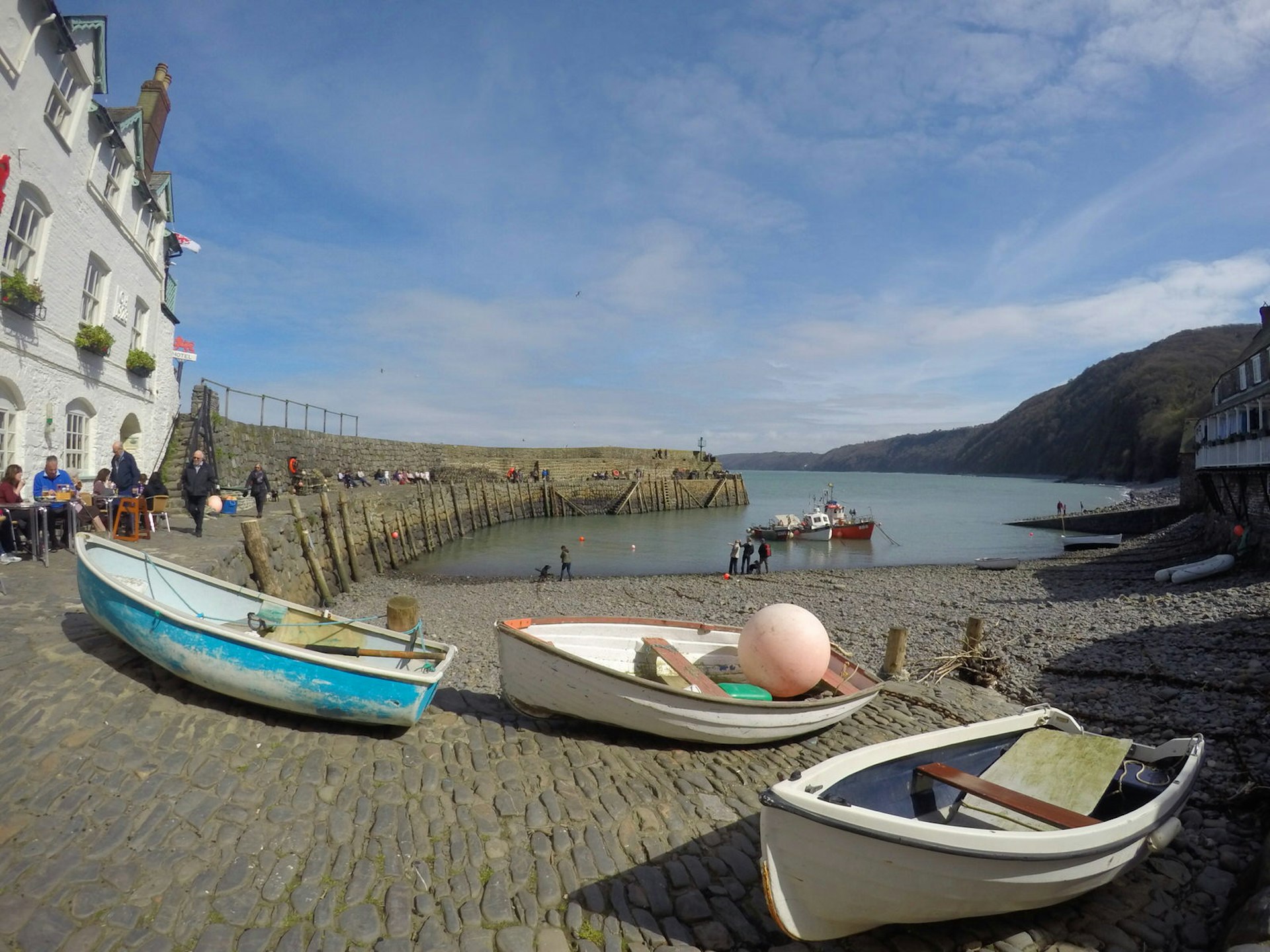
Either way you’ll want to stop for a drink at one of the shore-side pubs. At these places you can sip a pint while feeling the salt spray on your face or the sand between your toes. In North Devon highlights include the Instow Arms (instowarms.com) at Instow, the Red Lion at Clovelly and the Wreckers Retreat (hartlandquayhotel.co.uk) at Hartland Quay. In East Devon try the Anchor Inn (oldenglishinns.co.uk) at Beer and the Turf near Exminster. And in south Devon it’s worth detouring to the Cricket Inn at Beesands and the Hope & Anchor at Hope Cove.
Perhaps the pick though is the 700 year-old Pilchard Inn near South Devon’s Bigbury-on-Sea. It’s set on Burgh Island, a slanting chunk of rock that’s connected to the mainland by a stretch of sand at low tide. At high tide it’s cut off - either hop on the unique sea tractor (where the passenger platform sits high above the waves) or settle back, plot your next Devon adventure and have another pint. You’ve earned it.

